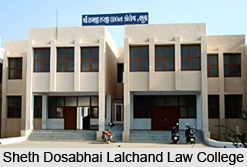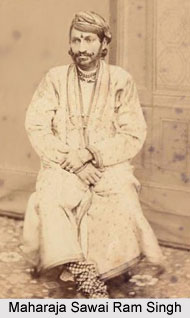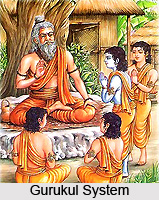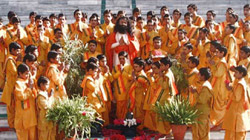Overseas examinations are the gateway to study abroad. In India as well as in other countries, it is regarded as a matter of pride and also a point of challenge to go abroad in order to take higher education. The charm and experience of learning abroad is regarded as something enriching. The new atmosphere, unknown culture and different patterns of study help in developing the students from India into better human beings. Based on the course of study and level, students are required to take a few tests in order to get an entry into the academic programs abroad.
There are various overseas examinations which enable a student to get a green card to study abroad. Some of the overseas examinations include SAT or Scholastic Aptitude Test. This test is currently known as SAT Reasoning Test. It is a test for admission into the colleges in the United States of America. The SAT is published, owned and developed by the College Board which is one of the non-profit organizations of United States, and was previously published, developed and scored by the Educational Testing Service or ETS. ETS now conducts the exam. The College Board declares that the SAT is able to decide whether or not a student is ready for college. The SAT Reasoning Test now takes three hours and forty-five minutes. From the date of its introduction in the year 1901 till today, the name of the test and the scoring has been altered numerous times. In the year 2005, this test was renamed as SAT Reasoning Test with potential scores from 600 to 2400 uniting test results from three 800-point sections (math, writing and critical reading), and also including various other subsections which are evaluated separately.
The Test of English as a Foreign Language or TOEFL, which is pronounced as `toe-full`. It judges the potential of an individual to understand and use English in an educational setting. It is also in several cases serves as an essential admission requirement for the non-native speakers of English at many universities and colleges of English speaking nations. Moreover, institutions like that of some licensing bodies, government agencies, businesses, or scholarship programs might ask for this test. A score obtained from the TOEFL is effective for two years and after that it is no longer officially reported, since the language proficiency of a candidate is believed to have considerably changed from the date of the test. Thus, universities and colleges generally ask for the most recent TOEFL scores only. The Test of English as a Foreign Language is a registered trademark of the ETS or Educational Testing Service and is administered all over the world. ETS was administered first in the year 1964, and as of now, 23 million or more students have taken up the test. At the Center for Applied Linguistics led by the linguist, Dr. Charles A. Ferguson, this test was originally developed. The policies ruling the TOEFL program are prepared with the advice of a sixteen member board. These board members are affiliated with graduate and undergraduate schools, two year institutions and various private or public agencies concerned to international education. The other members of the board are specialists of English as a foreign or second language. The Committee of Examiners of TOEFL is made of twelve specialists in language testing, linguistics, teaching or research. The major work of this team is to give proper suggestion on the contents of TOEFL test. This committee helps to ensure that the test is a genuine measure of testing the English language proficiency as per current methodologies and trends.
GMAT or the Graduate Management Admission Test is a test in mathematics and the English language which is computer adaptive standardized test in order to measure aptitude to get success academically in graduate business studies. Different business schools generally consider this test as one of the several selection criteria in order to get admission into a MBA course. The test is delivered through computers at several locations throughout the world. There are also numerous international locations without an extensive network of computers and in those places GMAT is provided either at some of the temporary computer-based centers on a few schedule or in the form of a paper-based test, which is given once or twice in a year, at some of the local testing centers. Till the month of August 2009, the fee required in order to take the GMAT is U.S. $250 all over the world.
GRE or Graduate Record Examination is a standardized test run commercially. This test is also considered to be the admission requirement for a number of graduate schools mainly in the United States, and also in a list of other English speaking countries. Administered and created by ETS or Educational Testing Service in the year 1949, the exam is aimed at testing the skills of abstract thinking in the areas of vocabulary, mathematics analytical writing. The GRE is chiefly a computer-based exam, governed by very few qualified testing centers. Paper-based exams are also available in some parts of the world which lack some of the technological requirements. The degree of importance placed upon the scores of GRE varies significantly from school to school and even different departments within the same school in case of the graduate school admissions process. The importance of a GRE score can range from being an important selection factor to being a mere admission formality. Some of the critics of this test are of the opinion that the format of the exam is so inflexible that it suitably tests how a student can fit into a standardized test taking process. In answer to the critics, ETS announced plans in the year 2006, to thoroughly redesign the structure of the test starting in the fall of the year 2007.
International English Language Testing System or IELTS is considered as an international standardized test to evaluate one`s English language proficiency. This test is managed jointly by the British Council, University of Cambridge ESOL Examinations and IDP Education Australia. IELTS came into being in the year 1989. IELTS test has two versions; the General Training Version and the Academic Version. The General Training Version of IELTS is modeled for those who are willing to attempt non-academic training or to acquire work experience, or for the purpose of immigration. The Academic Version of this test is designed for those individuals who are willing to join some of the universities or various other higher education institutes and for professionals like nurses and medical doctors who are willing to practice or study in an English-speaking nation.
It is, in general, considered that the writing and reading tests for the Academic Version are much more complicated to that of the General Training Version, because of the differences in the degree of academic and intellectual rigour in between two versions. The IELTS test is consented by a majority of British, Australian, New Zealand, Canadian, Irish and South African academic institutions. This test is also a vital requirement in order to get an immigration clearance to Canada and Australia. The test report form or IELTS result is valid for a period of two years only.
In the year 2007, the IELTS tested a million or more candidates in a twelve month period for the first time, thus making IELTS the most famous English language test of the world for immigration and higher education. The major characteristics of IELTS include an assortment of writing styles and accents delivered in text materials for minimizing linguistic bias. The test checks the potential of a candidate to read, listen, write and speak in English. A band score is used for every language sub-skill, i.e. reading, listening, writing and speaking. The range of the Band scale is from 0 to 9. One of the major components of IELTS is the speaking module which is held in a one-to-one interview with an examiner. Here, the examiner keeps on assessing the candidate while he or she is speaking, but the same is also recorded in order to monitor and also to re-mark in certain cases where there is an appeal against awarded band. This test is developed with the help of suitable inputs from different item writers throughout the world. Teams are situated in the USA, Canada, Australia, Great Britain, New Zealand and other English speaking nations.
All the candidates appearing for IELTS are required to complete four Modules; listening, writing, reading and speaking, in order to get a band score, which is displayed on the TRF or IELTS Test Report Form. Every candidate is required to take the same speaking and listening modules, while the writing and reading modules differ based on whether the candidate is taking the General or Academic Training Versions of the Test. The duration of this test is two hours and forty five minutes for reading, listening and writing modules. The Listening, Reading and Writing modules which are always in this order, are completed in a single day, and moreover, are conducted having no break in between. Speaking module of IELTS may be taken at the test center"s discretion, within a time span of seven days after or before the other Modules.
This test is scored on a scale of nine bands, with each of the bands representing a distinct competence in English. Total Band scores are accounted to the closest whole or half band. In order to avoid confusion, the rounding rule applies; in case, the average across the four skills stops in .25, then the same is rounded up to the next half band, and in case it ends in .75, then the same is rounded up to the next whole band. The nine bands of IELTS include 9, expert user. It suggests the candidate has complete operational control of the language and is very appropriate, fluent and accurate with a thorough understanding. The Band 8 means very good user. This band suggests a complete operational command of English with timely unsystematic inaccuracies and inappropriacies. Misinterpretations might occur in strange situations and takes care of composite detailed argumentation suitably. The Band Seven suggests a Good User. This band explains that the candidate is having an operational command over English and having occasional inappropriacies, inaccuracies and misunderstandings in several situations. The candidate normally handles complex language comfortably and interprets detailed reasoning. Band Six is a Competent User. This Band informs that the candidate has normally effective command of English apart from some inappropriacies, inaccuracies and misunderstandings. The candidate is capable of using and understanding fairly complex language, mainly in common situations. The Band 5 score suggests a Modest User who has a limited command of English, coping with general meaning in almost all situations, though is in all probability can make different mistakes. The candidate is capable of handling communication in his/her own field. The Band 4 is regarded as a limited user. With this band, a candidate is considered to possess basic competence which is confined to common situations and faces recurrent problems while using difficult language. The Band score of 3 is regarded as extremely limited user. This Band suggests that the candidate understands and conveys only general meaning in common situations and regular breakdowns occur in communication. The band 2 is and Intermittent User. This suggests that no actual communication is No real communication is achievable apart from the most fundamental information with the use of short formulae or isolated words in common situations and in order to meet urgent requirements. Band 1 is considered to be a Non User. It suggests that the individual does not possess the ability to use the language except to some isolated words. The last Band is 0, which means did not attempt the test. This suggests that there is no measurable information provided.
The IELTS test is conducted each and every year in 500 locations spread in 121 countries, and is regarded as one of the world"s fast-growing English language tests. The total number of candidates appearing for this test has grown considerably from about 80,000 in the year 1999, to over 1,000,000 in the year 2007. About half or a little more number of candidates sits for this test in the foreign countries to enter higher education. The minimum required Band scores of IELTS by different academic institutions vary. Generally, the institutions in the English-speaking countries ask for a greater IELTS band.
Commonwealth Executive MPA/MBA is developed, designed and implemented by four renowned South Asian open universities; Indira Gandhi National Open University, (IGNOU, India), Bangladesh Open University (BOU), Open University of Sri Lanka (OUSL) and Allama Iqbal Open University (AIOU, Pakistan), with technical assistance from the universities of the Commonwealth countries. CEMPA/CEMBA is provided only through these four South Asian open universities. This was negotiated by Commonwealth of Learning (COL) with financial assistance from the CFTC or Commonwealth Fund for Technical Co-operation. CEMPA/CEMBA offers the candidates a chance to obtain both valuable and accreditation training.
The MCAT or Medical College Admission Test is a computer-based standardized test for prospective medical students in Canada and the United States. It is planned to evaluate critical thinking, problem solving, written analysis and writing skills apart from knowledge of scientific principles and concepts. Before the month of 19th August 2006, the exam was a pencil and paper test. From the 27th of January 2007, all administrations of the MCAT are computer-based. This exam is conducted more than 25 times in a year at prometric centers. The number of administrations of MCAT may differ every year. Most of the candidates who sit for MCAT are undergraduates in their senior or junior years before applying to medical school. From the date of shortening the duration of the exam which is 4.5 to 5 hours, this test can be taken either in the morning or afternoon. This test possesses four sections which are Physical Sciences (PS), Verbal Reasoning (VR), Writing Sample (WS) and Biological Sciences (BS). The Physical Sciences, Verbal Reasoning and Biological Science sections are in the form of multiple choices. The writing sample contains two short essays which are simply typed into the computer. The questions and passages are prearranged, and therefore do not change in difficulty depending upon the functioning of the test taker (dissimilar to the Graduate Record Examination). The section of Physical Sciences evaluates problem-solving potential in general physics and chemistry and the Biological Sciences section judges the abilities in the fields of organic chemistry and biology. The Verbal Reasoning section measures the capacity to interpret, apply and evaluate arguments and information presented in prose style. The Biological Sciences section most directly associates itself with the success on the USMLE Step 1 exam, with a correlation coefficient of .553 vs. .491 for Physical Sciences and .397 for Verbal Reasoning. As expected, the composite scores of MCAT also correlate with the USMLE Step 1 success.
LSAT or the Law School Admission Test is an examination in Canada, United States and Australia, which is administered by LSAC or the Law School Admission Council for potential law school candidates. It is modeled to measure the verbal and logical reasoning skills. It is administered four times in a year. This is one of the most required exams for all ABA-approved law schools. The test was there in some form or the other since the year 1948, when the same was formed with the aim of giving law schools a means to judge the uniformly of applicants. From then, till now, this test has evolved considerably, with the existing version which was initiated in the earlier parts of 1990s. This exam possesses an unscored experimental section, four scored sections and an unscored writing section. Raw scores are changed over to a scaled score which ranges from 120 to 180, with an average score at about 151. At the time of applying to a law school, an applicant needs to report all the scores secured in the last five years.
The Overseas Examinations are thus considered very vital in the case of those candidates who are interested to pursue some course in foreign countries. Perspective candidates from India prepare sit for some or other overseas examinations every year to make their dream a reality.












